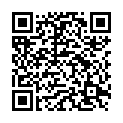|
|
|
| Module code: WIBASc265 |
|
|
4V+2U (6 hours per week) |
|
5 |
| Semester: 2 |
| Mandatory course: yes |
Language of instruction:
German |
Assessment:
Written or oral examination. The type of examination will be announced at the beginning of the course.
[updated 02.07.2019]
|
WIBASc265 (P450-0066) Industrial Engineering, Bachelor, ASPO 01.10.2013
, semester 2, mandatory course
|
90 class hours (= 67.5 clock hours) over a 15-week period.
The total student study time is 150 hours (equivalent to 5 ECTS credits).
There are therefore 82.5 hours available for class preparation and follow-up work and exam preparation.
|
Recommended prerequisites (modules):
WIBASc165 Mathematics I
[updated 20.01.2020]
|
Recommended as prerequisite for:
WIBASc-515 Automation Engineering
WIBASc-525-625-FÜ12 Using Mathematical Software
WIBASc-525-625-FÜ19 Simulation II
WIBASc-525-625-FÜ23 Simulation
WIBASc-525-625-FÜ27 Mathematics III
WIBASc-525-625-Ing22 Automation Technology
WIBASc345 Design Technology / CAD
WIBASc445 Electrical Engineering
[updated 19.01.2022]
|
Module coordinator:
Prof. Dr. Frank Kneip |
Lecturer:
Prof. Dr. Frank Kneip (lecture)
Prof. Dr. Frank Ulrich Rückert (lecture)
Michael Ohligschläger (exercise)
[updated 20.01.2020]
|
Learning outcomes:
_ After successfully completing this module, students will be able to solve theoretical, physical-technical and economic questions that are based on vector and matrix calculations.
_ They will be able to assess the solvability of linear systems of equations and name possible solutions.
_ Students will have mastered the technique of partial derivation of functions in marginals.
_ They will be able to analyze and solve selected differential equations.
_ And, they will have learned to mathematically model and solve physical-technical, as well as economic questions and interpret the results.
[updated 02.07.2019]
|
Module content:
1. Basics of vector analysis
a. Vector space, vectors
b. Linear independence
c. Coordinate transformation
d. Scalar and vector product
e. Lines and planes
f. Distance, angle and section calculations
g. Vector analysis applications
2. Functions in Rn
3. Basics of matrix calculation
a. Elementary matrix operations
b. Geometric transformations
c. Inverse matrix
d. Matrix calculation applications
4. Solving linear systems of equations
a. Gaussian elimination
b. Unique, ambiguous and unsolvable systems
c. Solvability criterion
d. Simultaneous solution of systems of equations
e. Inverse matrix
5. Differential calculus in Rn:
a. Partial derivatives
b. Applications of differential calculus in Rn
6. Differential equations
[updated 02.07.2019]
|
Teaching methods/Media:
Lecture:
_ Lecture at the blackboard, projector
_ Demonstrations with the Maple computer algebra system
_ Regularly revised lecture notes will be published for the module and additional written
materials will be made available electronically.
_ Lecture notes and materials will be available electronically.
_ Discussion forum on the Internet
Exercises
_ Exercises will be provided weekly and solved independently.
_ Mr. Ohligschläger will conduct a voluntary practice session where students will be able to work on sample solutions to the exercises on the board and in teams.
Computers/software that will be used in the course and/or can and should be used by students for preparation and follow-up:
_ Programmable calculator
_ Computer algebra system Maple
[updated 02.07.2019]
|
Recommended or required reading:
_ Papula, Lothar: Mathematik für Ingenieure und Naturwissenschaftler, Band 1; 13. Auflage, Vieweg + Teubner Verlag, 2011
_ Papula, Lothar: Mathematik für Ingenieure und Naturwissenschaftler, Band 2; 13. Auflage, Vieweg + Teubner Verlag, 2011
_ Papula, Lothar: Mathematik für Ingenieure und Naturwissenschaftler _ Anwendungsbeispiele;
6. Auflage, Vieweg + Teubner Verlag, 2012
_ Leupold, W. u.a.: Mathematik _ Ein Studienbuch für Ingenieure, Band 2; 2. Auflage,
Fachbuchverlag Leipzig - Hanser München, 2006
_ Meyberg, K./Vachenauer, P.: Höhere Mathematik 1; 6. Auflage, Springer Verlag, 2001
_ Neunzert, H./Eschmann, W.G. u.a.: Analysis 2; 3. Auflage, Springer Verlag, 1998
_ Preuß W./Wenisch, G.: Lehr- und Übungsbuch Mathematik, Band 2; 3. Auflage, Fachbuchverlag Leipzig - Hanser München, 2003
_ Preuß W./Wenisch, G.: Lehr- und Übungsbuch Mathematik, Band 3; 2. Auflage, Fachbuchverlag Leipzig - Hanser München, 2001
_ Bartsch, Hans-Jochen: Taschenbuch mathematischer Formeln für Ingenieure und
Naturwissenschaftler; 22. Auflage, Carl Hanser Verlag, 2011
_ Papula, Lothar: Mathematische Formelsammlung für Ingenieure und Naturwissenschaftler;
10. Auflage, Vieweg + Teubner Verlag, 2009
_ Teubner-Taschenbuch der Mathematik Bd.1; 2. Auflage, Vieweg + Teubner Verlag, 2003
[updated 02.07.2019]
|

